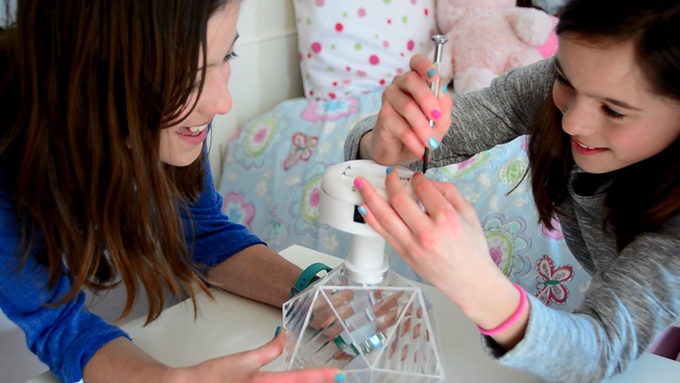Want to Raise a Smart, Young Scientist? Try This

Amazon has unveiled a STEM Club subscription plan, that delivers educational toys for $19.99 each month. The program takes a learn-through-play approach, like many STEM programs for kids. It’s a growing product, especially since the future is moving more towards science, technology, engineering, and math-related jobs.
These are the fields of the future as factory and labor jobs move towards automation. For many looking to the future, this is an investment for our economy. But not much is needed to light the spark of curiosity of a child.
“If you’re a child, you are curious about your environment,” Neil deGrasse Tyson told us. “You put things in their midst that help them explore. Why don’t you get a pair of binoculars, just leave it there one day? Watch ‘em pick it up. And watch ‘em look around. They’ll do all kinds of things with it.”
Not much is needed to fuel a kid’s imagination. Encouragement is the primary weapon in a parent’s arsenal. In order to help an inquisitive mind grow, it’s always good to throw in some new gear. Amazon’s STEM Club is a smart business move, monetizing on a growing market and idea.
What’s more, their toys are marketed towards boys and girls.
Many toys for girls are “pinkwashed” as this Barbie typewriter shows, simplifying play rather than encouraging young girls to explore mechanics and work through problems. For too long the toy market has been built on the assumption of a gendered play pattern, says Debbie Sterling, founder and CEO of Goldieblox.
When she first went to the New York Toy Fair with a prototype for Goldieblox, industry veterans thought her mission was a “noble cause,” but ultimately it wouldn’t sell. So, she turned to crowdfunding to let the consumers vote with their dollars. The response was overwhelming, and her pitch video went viral. The people wanted this product. By the end of the campaign, Sterling had a million dollars before making a single unit.
Toy makers, much like the STEM industry itself, have been under this assumption that women don’t fit into inquisitive or constructive play styles, or these industry roles. This assumption was created by marketing, constrained by the design of gendered toy aisles. These distinctions are beginning to become blurred with the rise of internet marketspaces. Amazon, for instance, doesn’t make the distinction “For Boys” or “For Girls” in its toy section. Toys “R” Us, first a brick-and-mortar toy seller, allows online shoppers to filter products by gender if they choose, but the toy company does not use gendered categories to its organize in-store offerings.
—
Editor’s note: A prior version of this article failed to distinguish between how Toys “R” Us organizes its toys online versus in-store.





